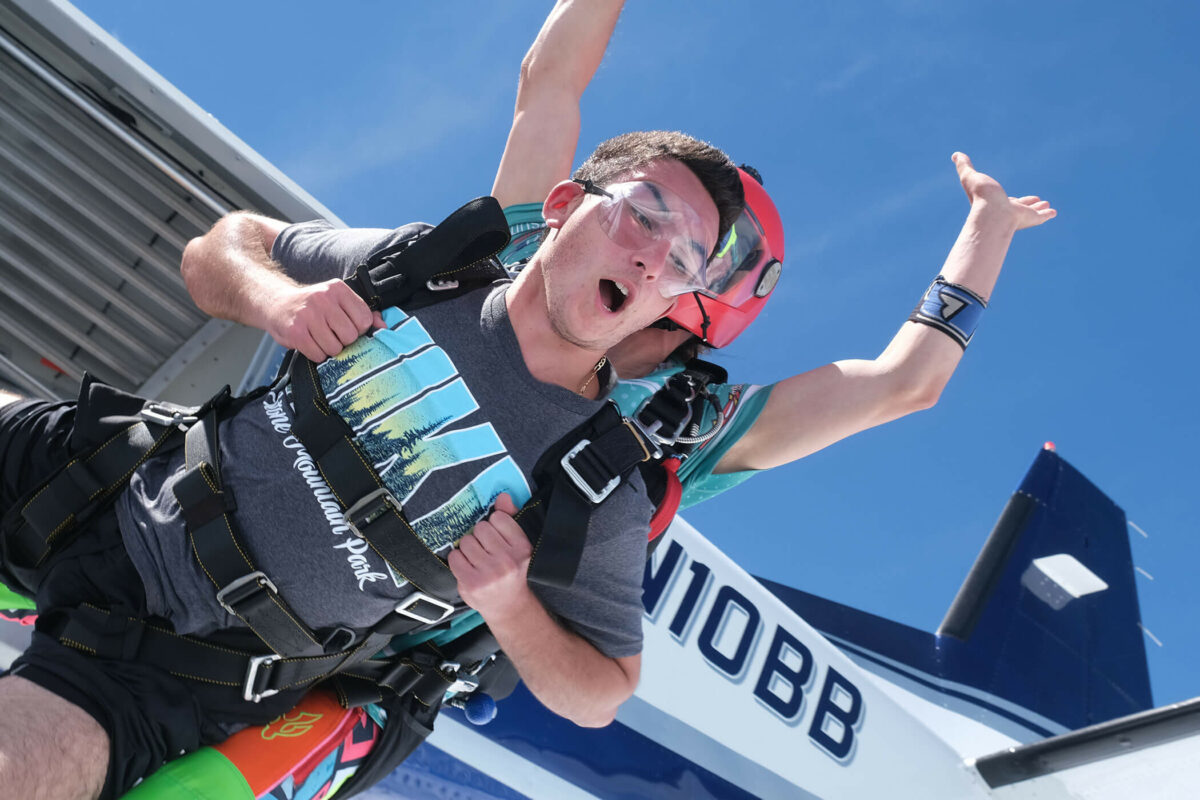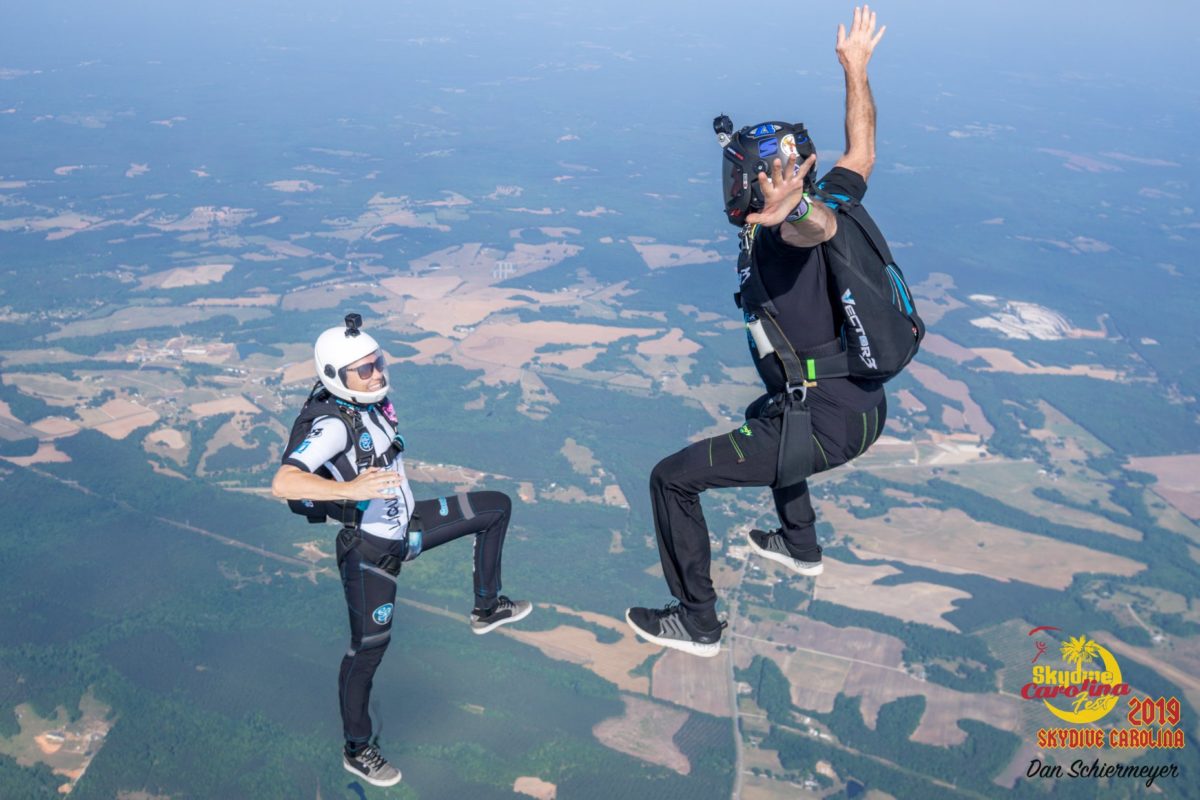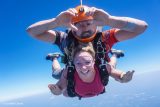How To Calculate Time In Freefall During A Skydive
Skydiving
12 months ago
Calculating Freefall Time
With a huge leap of faith, you’re about to dive into the exhilarating world of skydiving. But … how long of a fall are we talking about here? Well, skydiving freefall time varies based on a few factors and can range from a few seconds to MINUTES.
There are pros and cons to all altitudes, and choosing the right one for you is like unlocking a secret level in the game of skydiving! Let’s jump into all things altitude and answer common questions about how fast we fall and why.

How Long Do You Freefall While Skydiving?
Freefall times depend on a few prominent factors, like exit altitude and fall rate:
What is exit altitude?
The height the airplane is at when jumpers leave is called exit altitude. You may commonly hear someone refer to the ascent to this height as “the ride to altitude.” Today’s skydivers generally jump anywhere from 3,500 feet to 14,500 feet, with a few exceptions when people opt to go much higher during something called a HALO or HAHO jump.
What is a HALO jump? A High Altitude Low Opening or High Altitude High Opening skydive is when jumpers leave the aircraft from an atypically high altitude, such as 18,000 feet!
What is fall rate?
Fall rate simply refers to the speed at which a skydiver falls through the air. The neat thing about fall rate is that it can be controlled and changed – to a certain extent. Working on “levels” (AKA, fall rate control) is something that students who are pursuing their A-license must complete.
Fall rate is determined by body position, weight, drag, and air density. Let’s break it down:
Body position.
Skydivers can configure their bodies to slow down or speed up during freefall. If a skydiver creates more surface area, by flattening out and falling belly-to-earth, they will typically have a slower fall rate than someone in a head-up position. Why? There’s more surface area, and therefore more drag for gravity to work against.
Weight.
The more weight an object has – or in this case, a person – the stronger the gravitational pull. Here’s the neat thing: both smaller and larger jumpers can fly together, because they can control their fall rates!
Drag.
Drag pertains to how much surface area the skydiver takes up with their body position and with their choice of clothing. This is why it’s typical to see a smaller jumper wearing a skintight jumpsuit in order to fly with a larger jumper, who will be wearing a baggy jumpsuit. The baggier the clothes, the slower the fall rate, and vice versa.
Air density.
Air density can have effects on freefall time, but most significantly affects how our parachutes fly. With a higher air density, freefall tends to be faster (and therefore, a bit shorter), but this is nearly unnoticeable unless you’re jumping from crazy high altitudes. When air density is lower, our canopies have a slower opening, forward speed, and descent rate, and vice versa. Air density variations under an open canopy are much more noticeable than they are in freefall, and it’s critical to remember this when traveling to jump at places with different density altitudes than what you’re used to!
So, since tandem skydives have two people and are double the weight, what’s the scoop on freefall times?
- How long is freefall from 10,000 feet? Approximately 30-45 seconds
- How long is freefall from 13,000 feet? Approximately 45-60 seconds
- How long is freefall from 14,000 feet? Approximately 60-65 seconds
- How long is freefall from 15,000 feet? Approximately 65-70 seconds

Now For The Math… Calculating Freefall Times
The United States Parachute Association (USPA) created a fabulous breakdown of freefall times considering the factors mentioned above. Because freefall time can vary so much, it’s fun to calculate it once you’ve landed. Although adrenaline will be SURGING after a skydive, take a sec to put your math hat on and do this quick equation: altitude at which you opened, minus the altitude at which you exited. Check this number against this handy chart and you’ll have your total freefall time!
How Fast Do You Fall When Skydiving?
Skydivers fall at terminal velocity. What does this mean, and is it immediate? Let’s dive in.
What is terminal velocity? At some point during freefall, a skydiver will stop accelerating, this happens when they’ve reached their personal terminal velocity – which is in the ballpark of 120 mph. Yes – ONE TWO ZERO – eek! Terminal velocity is an equilibrium that occurs when the drag of the skydiver (based on all those factors mentioned above) levels out with the gravitational pull on their body.
Do tandem pairs have a higher terminal velocity than solo skydivers? Nope! Tandem rigs are equipped with something called a drogue. Attached to the main canopy, the drogue is released during the first few seconds of freefall. Drogues look like mini round parachutes and aid in keeping the tandem pair’s speed at bay, stability, and deploying the main parachute.
Does terminal velocity start the second you leave the plane? Nope. Remember, the plane is already in forward motion, so when you exit the aircraft, you actually aren’t falling straight down. (Side note: You very rarely will fall straight down – there’s still wind blowing in different directions thousands of feet off the ground)! On average, every 1,000 feet in freefall takes about 5-6 seconds, but the first 1,000 takes an average of 10 seconds, because of the wind gradient from the plane.
Ready to take the leap, spread your wings, and make the sky your playground? Book your skydive today – we can’t wait to have you. Blue skies!




